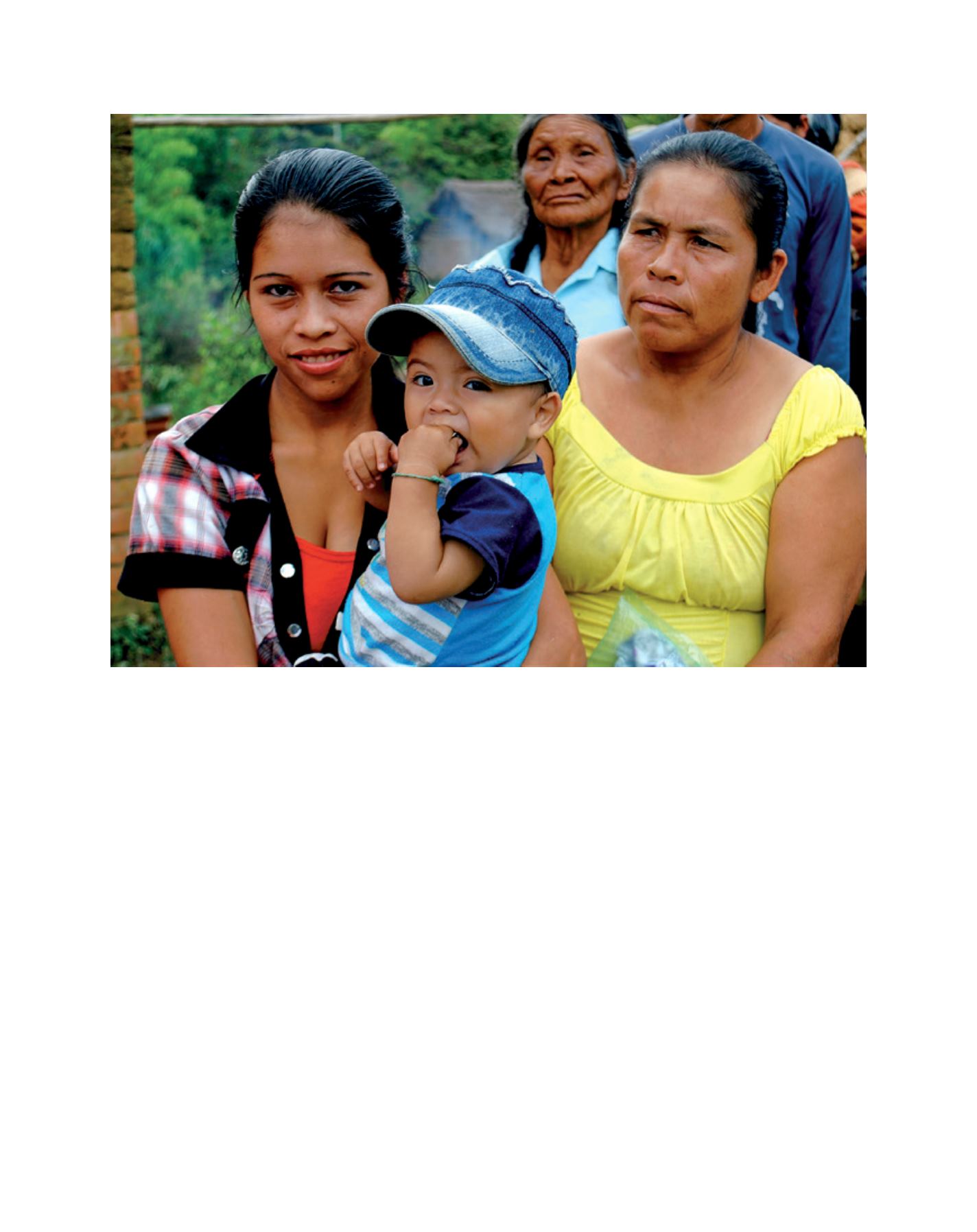

[
] 77
Bolivia is the fifteenth richest country in the world in
forest cover, and the eighth richest in biodiversity. In 2010,
the estimates for surface covered by different types of forest
in Bolivia reached 46 million hectares. However, recent
studies by the Bolivian non-governmental organization
(NGO) Fundación Amigos de la Naturaleza (the Union of
Friends of the Nature), show that between 2000 and 2010
1.8 million hectares of wood was cleared in Bolivia. Even
though deforestation has decreased since the 1990s, when
250-300 million hectares were lost each year especially due
to the expansion of agriculture, the yearly rate between 2000
and 2010 was still as high as 200 million hectares per year.
Bolivia has a wide system of protected areas, which covers
around 15 per cent of the country. The national parks and areas
cover the full range of the different terrains and ecosystems to
be found in Bolivia, but unfortunately most of the country’s
valuable resources are hidden in their grounds. Therefore, the
protected areas are also exposed to deforestation.
The Bolivian Government has taken different approaches
to reducing deforestation and helping the local people to
obtain a sustainable way of living in harmony with the
country’s forests. The Royal Embassy of Denmark in Bolivia
has assisted in the Government’s focus on reforestation
through the Danish development cooperation, Danida.
A new way to support local capacity building are the
programmes financed by Danida to strengthen the civil society
in order to promote sustainable forest management. The Civil
Society Fund for sustainable forest management (FOSC, its
acronym in Spanish for the Fund Manager in Bolivia), finances
three Civil Society Organizations in three prioritized regions
of Bolivia: Northern La Paz, Pando/Riberalta and Chiquitanía.
It aims at strengthen the civil society to adapt to and mitigate
climate change in the 3 regions and to improve their liveli-
hoods and incomes. The purpose is to develop local capacities
for sustainable forest management to reduce deforestation.
The three programmes began in May 2015 and will last 30
months until October 2017.
The programme in Northern La Paz takes place in the middle
of the national park Madidi, where the Wildlife Conservation
Society (WCS) has been working since the late 1990s. The park
is over 15,000 square miles, and covers the tropical Andes in
Bolivia. The landscape and ecosystems in the park vary from
moist tropical rainforest to grasslands and montane forests. The
biodiversity also shows the vast diversity of the park: here reside
1,100 bird species and 300 mammal species, among them jaguars
and Andean bears. WCS finds that the biggest challenges in the
park in regard to deforestation are the building of roads, hydro-
electric projects, illegal logging, mining and agriculture.
Image: Kathrine Dalsgaard
Local communities are the prime beneficiaries of the different development programmes in Bolivia
L
iving
L
and
















